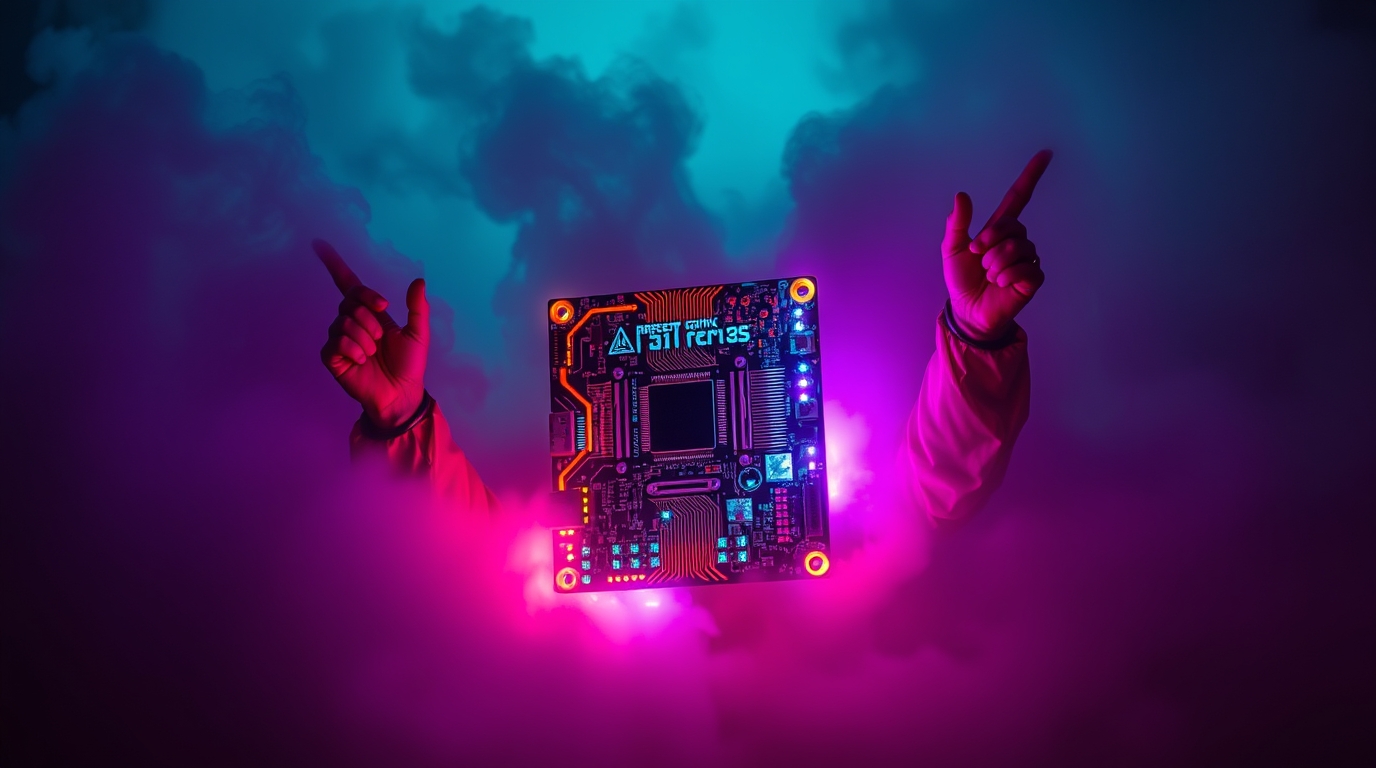PCB Design Survival Guide: Essential Electrical Terms You Need to Know (Or You're Fucked)
 Benjaminkamaraj
Benjaminkamaraj
Alright, gather 'round, because we're about to demystify the electrifying world of PCB design! Think of me as your grizzled, seen-it-all guide, leading you through the treacherous jungle of acronyms and technical jargon. I won't bore you with textbook definitions; instead, I'll give you the real-world lowdown, the stuff you actually need to know before you dive headfirst into laying out those beautiful, intricate circuit boards. Forget the physics textbook bullshit – we're talking practical knowledge here. So, grab your soldering iron (metaphorically, for now), and let's get started.

The Voltage Vortex: It's All About That Potential, Baby
Okay, first up: Voltage (V). Imagine a water tank on top of a hill. The higher the tank, the more potential energy the water has. Voltage is the electrical equivalent of that potential energy. It's the "oomph" that pushes electrons through your circuit. Think of it as the pressure. Without voltage, nothing happens. Your circuit is just a pretty, useless piece of art.

High voltage can be dangerous, so be careful when you're working with power supplies. A little shock is a buzzkill; a big shock can be a goddamn killer. Remember that. The unit for voltage is the Volt (V).
Current Concerns: The Electron Traffic Jam
Next, we have Current (I). If voltage is the pressure, current is the flow. It's the number of electrons that are actually moving through your circuit at any given time. Think of it as the traffic. The more electrons flowing, the higher the current. The unit for current is the Ampere (A), or simply "Amps."

Too much current can cause components to overheat and explode (literally). That's why we use fuses and circuit breakers to protect our circuits. Imagine a clogged artery - same principle. So, pay attention to the current ratings of your components and make sure they can handle the load.
Resistance is NOT Futile: It's Actually Essential
Now, let's talk about Resistance (R). Resistance is the opposition to the flow of current. Think of it as a narrow pipe that restricts the flow of water. The higher the resistance, the less current can flow. The unit for resistance is the Ohm (Ω).

Resistors are essential components in circuits because they control the current and voltage levels. They're like the traffic cops of your circuit, directing the flow and preventing electrical gridlock. They can also generate heat if they’re being used as load. Too much current going through a resistor can burn it out, so be sure to choose resistors with the appropriate power rating.
Ohm's Law: The Holy Trinity of Electronics
Okay, now we get to the granddaddy of all electrical laws: Ohm's Law. This simple equation describes the relationship between voltage, current, and resistance:

V = I * R
Voltage equals Current times Resistance.
It's like the goddamn Rosetta Stone of electronics. If you know two of these values, you can calculate the third. This is fundamental to understanding how circuits work. Commit this equation to memory, tattoo it on your arm, whatever it takes. You'll use it constantly.
Capacitance: Storing Energy Like a Fucking Squirrel
Let's talk about Capacitance (C). A capacitor is like a tiny rechargeable battery. It stores electrical energy in an electric field. Think of it as a squirrel hoarding nuts for the winter. The unit for capacitance is the Farad (F).

Capacitors are used in circuits for a variety of purposes, such as filtering noise, smoothing voltage, and storing energy for temporary use. They can also be used to create timing circuits and oscillators. Don't just blindly throw capacitors into your circuit. Choose the right capacitance value for your application.
Inductance: The Coil That Fights Back
Now for Inductance (L). An inductor is a coil of wire that stores energy in a magnetic field. Think of it as a spring that resists changes in current flow. The unit for inductance is the Henry (H).

Inductors are used in circuits to filter noise, store energy, and create oscillators. They are often used in power supplies, radio frequency circuits, and motor control circuits. They store energy like a spring and they fights back when the current flow changes. Just like the capacitors, choose the right values for your application.
Frequency Frenzy: How Fast Things Change Matters
Finally, Frequency (f). Frequency is the rate at which something repeats itself over time. In electronics, it refers to the rate at which an alternating current (AC) changes direction. Think of it as the beat of a drum. The unit for frequency is the Hertz (Hz).

Frequency is a crucial parameter in many electronic circuits, especially those that deal with radio waves, audio signals, and digital data. Understanding frequency is essential for designing filters, oscillators, and other circuits that operate at specific frequencies.
Now Go Forth and Design (Without Totally Fucking Up)
Alright, you lightning bastards! You've now got a basic understanding of some of the most essential electrical terms you need to know before you start designing PCBs. This isn't everything, of course, but it's a damn good start. Remember, practice makes perfect (or at least less likely to explode). So, get out there, start experimenting, and don't be afraid to make mistakes. That's how you learn. Now go forth and design some circuits, and try not to set anything on fire.

Subscribe to my newsletter
Read articles from Benjaminkamaraj directly inside your inbox. Subscribe to the newsletter, and don't miss out.
Written by

Benjaminkamaraj
Benjaminkamaraj
Engineer's mind, writer's soul. Decoding circuits & weaving words.